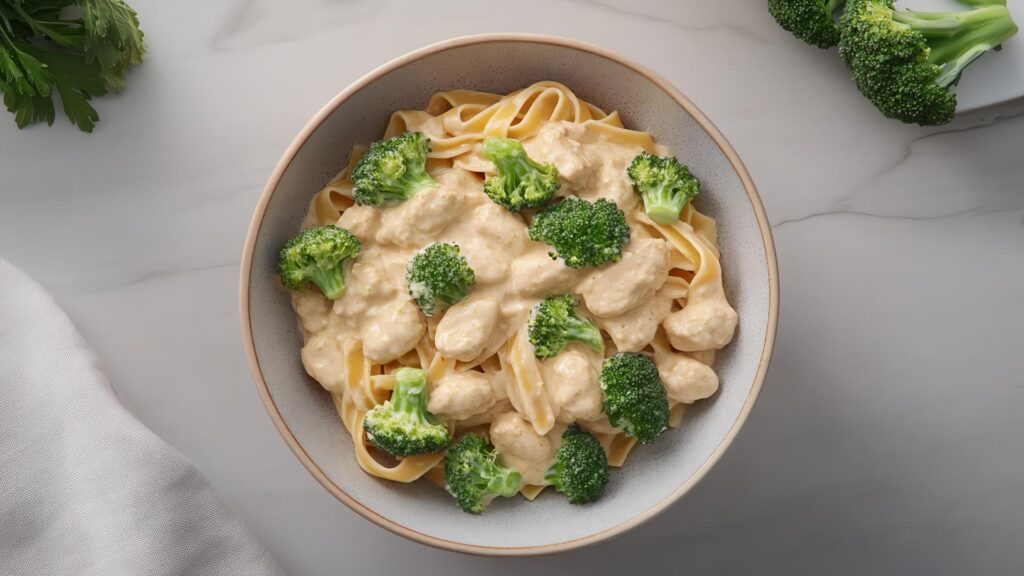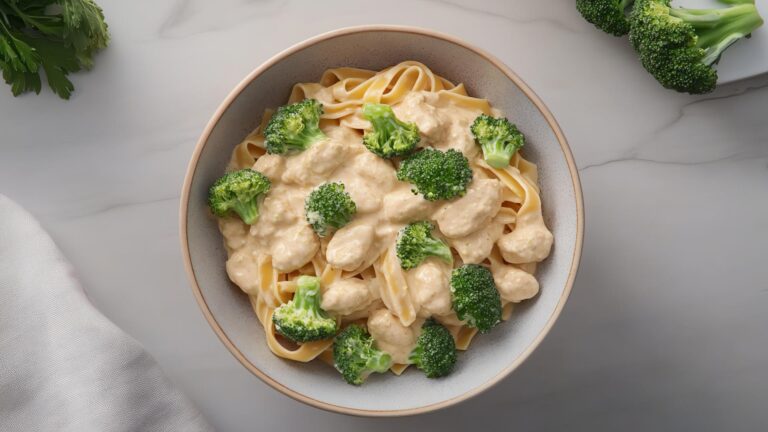Alfredo sauce has long been celebrated as one of the richest, creamiest sauces in Italian cuisine, and for good reason. Its velvety texture and indulgent flavor can transform even the simplest pasta into a luxurious meal. However, while the end result seems effortless, many home cooks struggle to recreate that perfect balance of creaminess and taste. The secret lies not just in the technique, but in knowing exactly which ingredients you need and how they interact. By understanding what goes into a classic Alfredo, you can confidently create a sauce that rivals even restaurant-quality versions.
Understanding Alfredo Sauce
Alfredo sauce traces its roots back to early 20th-century Rome, where Alfredo di Lelio created a buttery, cheesy pasta to please his pregnant wife. The original recipe was simple, relying on butter, Parmesan, and pasta water to achieve its signature richness. Over time, the sauce evolved, particularly in North America, with the addition of cream to create the smooth, decadent sauce we know today.
Knowing the right ingredients is essential because even minor deviations can change the texture or flavor entirely. While store-bought Alfredo sauces are convenient, they often rely on thickeners and preservatives, which can compromise the fresh, natural taste. By mastering the fundamental components, you gain control over the flavor, texture, and richness of your creamy pasta sauce, allowing every dish to taste homemade and authentic.
Core Alfredo Sauce Ingredients
Butter – The Flavor Base
Butter is the heart of any classic Alfredo sauce. Its rich, creamy fat content carries the flavors of other ingredients and creates the silky texture that defines this sauce. Choosing between salted and unsalted butter depends on your preference; unsalted allows precise control of salt in the final dish, while salted can enhance the overall flavor. Either way, the quality of the butter impacts the depth of taste, making it worth selecting a high-quality option for the best results.
Heavy Cream – Creamy Texture
Heavy cream is what transforms butter and cheese into a luxurious, thick sauce. It provides the creamy mouthfeel that clings perfectly to pasta. For those looking for a lighter version, alternatives such as half-and-half or a mix of milk with a small amount of flour can create a similar texture, though the result may be slightly less rich. Regardless of choice, the cream must be incorporated slowly to prevent curdling, ensuring a smooth, indulgent consistency.
Parmesan Cheese – The Classic Flavor
Parmesan cheese is the defining flavor in Alfredo sauce. Its nutty, salty profile deepens the richness and creates the unmistakable taste we associate with this dish. For optimal results, use freshly grated Parmesan rather than pre-shredded varieties, which often contain anti-caking agents that can lead to a grainy texture. Gradually melting the cheese into the butter and cream ensures a smooth, velvety finish, and careful incorporation allows the sauce to thicken naturally.
Garlic – Aromatic Boost
Garlic adds a subtle aromatic depth that complements the richness of butter and cream without overpowering the sauce. Fresh minced garlic provides the most vibrant flavor, while powdered garlic can be used in a pinch, though it will produce a slightly different taste. Sautéing the garlic gently in butter before adding cream releases its flavor and infuses the sauce evenly, enhancing the overall complexity of the dish.
Optional Ingredients for Flavor Variations
Nutmeg – Subtle Warmth
A pinch of nutmeg can elevate Alfredo sauce with a hint of warmth that balances the creaminess beautifully. The key is moderation; too much nutmeg will dominate the delicate flavors of butter and cheese.
Black Pepper – Mild Heat
Freshly ground black pepper adds gentle heat and depth. It works well in combination with nutmeg, enhancing the flavor complexity without overwhelming the sauce.
Fresh Herbs – Garnish and Taste
Adding fresh herbs like parsley, basil, or thyme at the end can provide color, fragrance, and a subtle herbal note. They complement the creamy richness and create a visually appealing dish.
How to Make Alfredo Sauce Step by Step
Creating a perfect Alfredo sauce is straightforward when you follow a deliberate process. Begin by melting butter in a pan over medium heat, then add garlic and sauté until fragrant. Slowly pour in heavy cream for Alfredo, allowing it to warm without boiling. Once the cream is ready, incorporate Parmesan cheese for sauce gradually, stirring continuously to prevent clumping. Finally, adjust seasoning with salt, pepper, and optional nutmeg. This step-by-step process ensures a smooth, rich creamy pasta sauce every time.
Tips for a Perfectly Smooth Alfredo Sauce
- Avoiding a grainy texture requires attention to detail.
- Always add cheese gradually and stir consistently.
- The temperature of your pan is crucial; too high heat can cause the proteins in Parmesan to seize, while too low heat prevents proper melting.
- Maintaining consistent, gentle heat allows the sauce to thicken naturally without breaking.
- This careful approach guarantees a luxurious, velvety consistency that clings to pasta beautifully.
Pairing Alfredo Sauce with Pasta
Alfredo sauce pairs best with long, flat pastas like fettuccine or tagliatelle, which allow the sauce to coat every strand evenly. For a lighter option, it can also be tossed with penne or rotini. When serving, consider complementary dishes such as lightly sautéed vegetables, grilled chicken, or shrimp. These additions enhance the overall experience while keeping the sauce as the centerpiece.
Common Mistakes to Avoid
- One of the most common mistakes is overheating the sauce.
- High heat can cause separation, leaving a greasy layer on top and a watery base.
- Using pre-shredded cheese with additives often results in clumping, while skipping seasoning adjustments leads to a bland sauce.
- Careful attention to these details ensures your Alfredo sauce achieves its ideal creamy, cohesive texture.
Quick Variations of Alfredo Sauce
Alfredo sauce is versatile, lending itself to numerous adaptations. Chicken Alfredo adds protein while maintaining the creamy richness. Shrimp Alfredo introduces a delicate seafood element, perfect for special occasions. Vegetable Alfredo can include broccoli, spinach, or mushrooms, creating a hearty and satisfying meal while keeping the sauce light and flavorful.
Wrapping Up…
Mastering how to make Alfredo sauce begins with understanding the ingredients and how they interact. High-quality butter, fresh Parmesan, heavy cream, and garlic form the core, while optional additions like nutmeg, black pepper, and fresh herbs allow personalization. Avoiding common mistakes and paying attention to technique ensures your sauce is consistently smooth and rich. With practice and attention to detail, you can create the best Alfredo sauce recipe at home, turning every pasta dish into a memorable experience. By focusing on fresh, quality ingredients and proper technique, you guarantee a truly indulgent, homemade Alfredo that is both flavorful and visually appealing.





